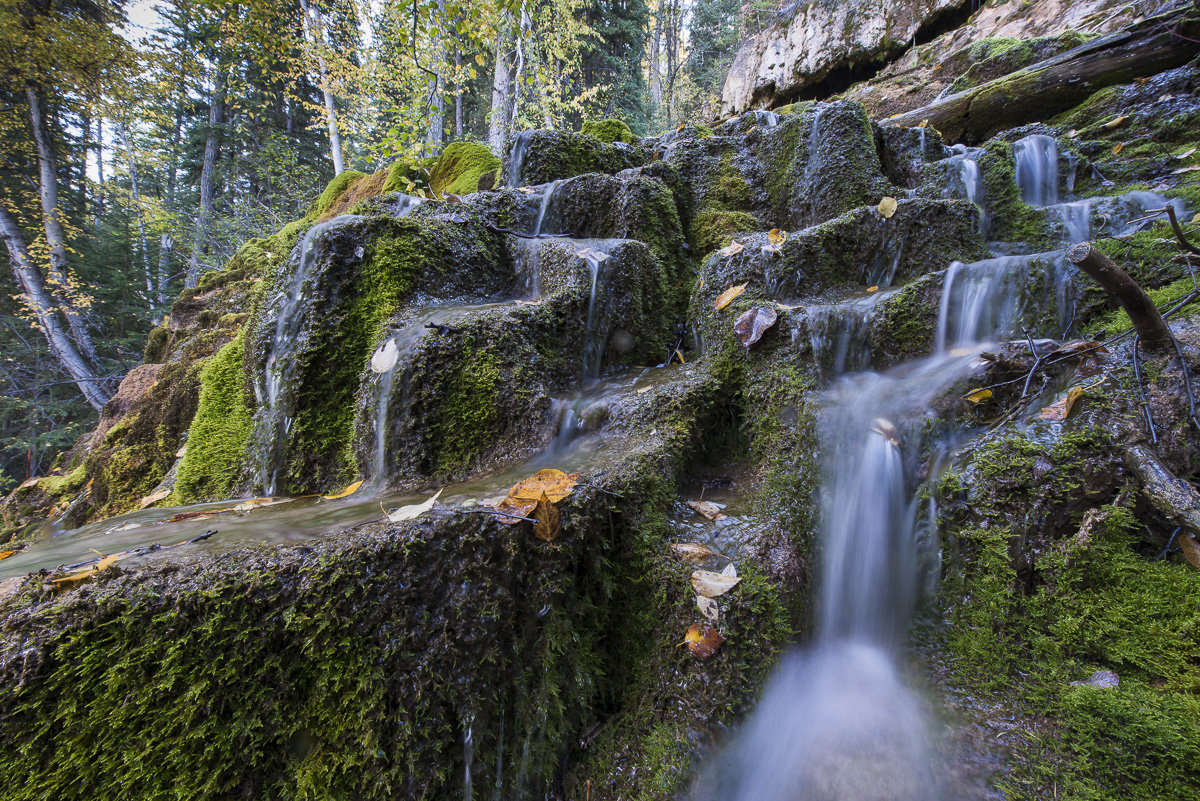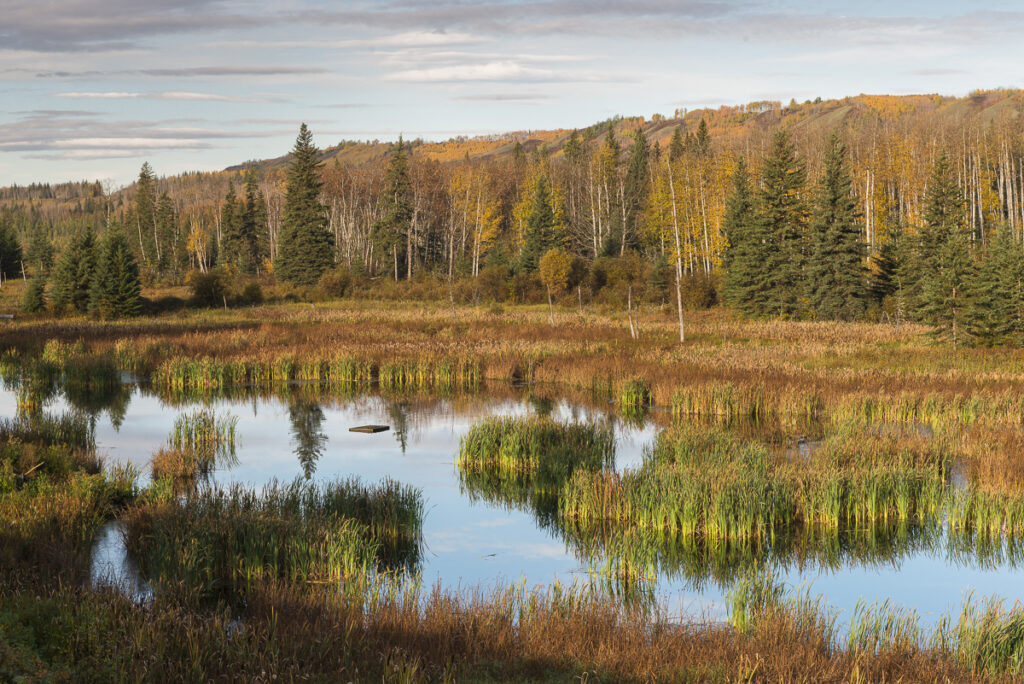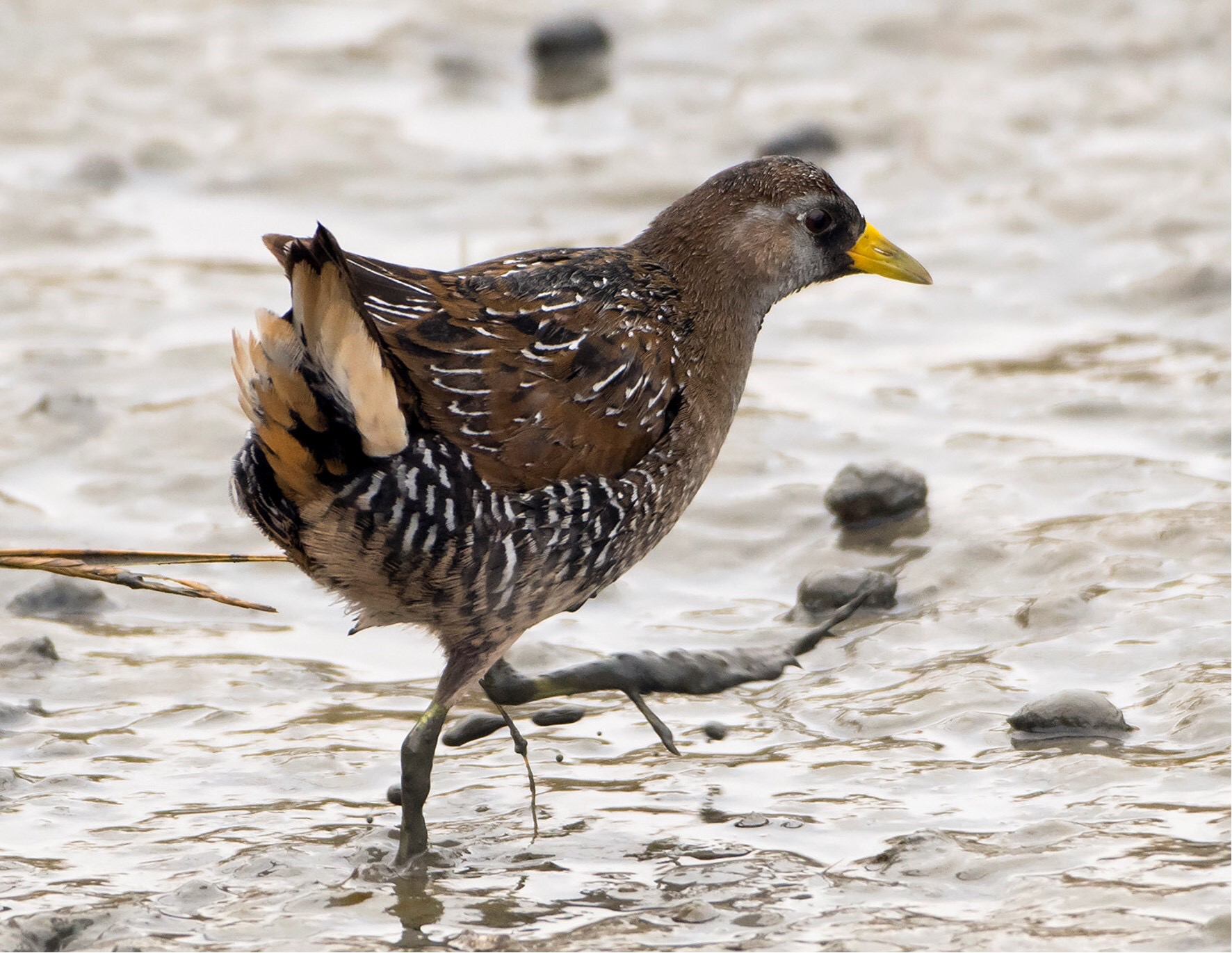
Drawing (on) a decade of climate change in the North
Artist Alison McCreesh’s latest book documents her travels around the Arctic during her 20s. In...
Peace Valley residents and avid birders knew it was coming but that doesn’t make the destruction of an irreplaceable wetland any easier.
This month, BC Hydro is set to drain and log Watson Slough to make way for the Site C dam in northwest B.C. Beavers will be trapped and euthanized and their dams will be destroyed to release the water from the wetlands.
The slough, a collection of different types of wetlands stretching 20 hectares — roughly the size of 25 Canadian football fields — is a beloved nature area in the Peace River Valley renowned for birdwatching and visited by hundreds of schoolchildren over the years. It’s home to at-risk species like the yellow rail, a small marsh bird that hides among the grasses, and the stocky western toad. Elk, black bears, beavers, deer and muskrats also use the wetland along Highway 29 west of Fort St. John.
BC Hydro says it is going to replace the wetlands the controversial hydroelectric project destroys, but experts warn that wetlands are like old growth forests and can’t truly be replaced.
“One of the things we’ve known for years now, for decades, is that wetlands aren’t really replaceable,” Rebecca Rooney, a wetland ecologist at the University of Waterloo, told The Narwhal in an interview. “The idea that we can destroy things and then recreate them at our convenience is just a beautiful lie.”
The Site C dam could destroy close to 800 hectares of wetland in the Peace River Valley, according to the 2014 federal-provincial environmental assessment report.
BC Hydro’s goal is to preserve the net function of the wetlands that will be destroyed, spokesperson Bob Gammer said in a statement to The Narwhal. To do that the utility company is working with Ducks Unlimited Canada to build new marshes and conserve existing wetlands at risk of destruction by other projects. The non-profit has restored hundreds of wetlands in B.C. since 1968. According to BC Hydro, most of the newly constructed wetlands will be marshes or shallow open water areas.
But not all wetlands are the same.
Grassy marshes are a far cry from tufa seeps (rare, mossy, hillside wetlands) that take thousands of years to form. There are seven tufa seeps within the Site C project area and at least five will be destroyed. So will the only marl fen, another rare wetland found at Watson Slough, which supports a rich array of plants.

BC Hydro has itself acknowledged tufa seeps and marl fens “are unusual ecosystems that cannot be recreated,” according to the environmental assessment report.
The utility company’s approach “satisfies the federal and provincial conditions,” Gammer said. “Both levels of government are well aware of and have vetted and accepted our compensation program to meet our regulatory requirements,” he said.
Wetland compensation projects are ostensibly framed as a way to offset the impact of new development or resource extraction. But Rooney sees them as more of a “tax that businesses pay to carry on with business as usual.”
“It is better than nothing,” she said. “If the policy goal is to preserve wetlands and their function for future generations, that’s not happening.”
“It is quite an amazing wetland,” Peace Valley farmer Ken Boon told The Narwhal, referring to Watson Slough. “It’s just a real hub for biodiversity.”
For Boon, who lives just a few kilometres from the slough, it’s not only the loss of the wetland that’s concerning — it’s how B.C. Hydro plans to go about destroying it.
Watson Slough was initially meant to be logged more than five years ago. The work was delayed at the behest of local communities and the Peace River Regional District, who argued it was unnecessary to destroy the wetland so many years before the reservoir was filled. Boon said in 2017 there were no plans to cull the beavers and drain the slough.
In response, Gammer said “detailed clearing plans had not previously been developed for the entire slough.”
BC Hydro now says it’s necessary to drain the wetland to allow for safe logging this winter to prevent any safety hazards once the reservoir is filled. As for the beavers, BC Hydro determined it’s the most humane option, Gammer said. “The likelihood of a beaver surviving relocation is quite low, while the stress of trapping and relocation will be quite high,” he said.
When it comes to BC Hydro’s plans to replace the lost wetlands, Boon thinks that’s a “pretty impossible task.”
Across Canada, huge numbers of wetlands are wrecked to make room for cities, farmland, mines and other industrial projects. In some areas, such as southwestern Ontario, more than 90 per cent of the wetlands that once dotted the landscape are now gone, Rooney said. “Every single one that’s left is precious,” she said.
Wetlands are home to a diversity of plants and animals. They help clean contaminants from water and manage its flow through the landscape. Importantly, in the context of climate change, they can capture and store carbon.
The different types of wetlands — bogs, fens, swamps and marshes — are better at some of these things than others. A major challenge with compensation programs is the diverse collection of wetlands that occur naturally end up replaced with a stock model, Rooney said. “We just get this cookie cutter duck factory, which is really great at doing some things but can’t replace everything that has been lost,” she said.
In a statement to The Narwhal, Bruce Harrison, Ducks Unlimited Canada’s B.C. head of conservation science and planning, said he agrees “the best way to conserve wetlands is to avoid impacts wherever possible and that compensation should be the last tool in the toolbox.”
“However, we also understand that sometimes wetland impacts cannot be avoided, in which case offsetting wetlands is necessary,” he said. “These efforts are hugely important to the ecological health and functioning of the Peace River Valley.”
In general, it takes a few years for a replacement wetland to be “mostly functional,” Harrison said, though the timeline can vary depending on the state of the replacement site and type of wetland being restored.

So far, BC Hydro and Ducks Unlimited Canada have identified 500 hectares that could be used for compensation wetlands, Gammer said. Ducks Unlimited has already built a 50-hectare marsh near Clayhurst, a community east of Fort St. John near the B.C.-Alberta border, according to Gammer.
The organizations are also working to preserve another 175 hectares of wetlands in the region this summer, which according to BC Hydro, would have been lost otherwise. These are wetlands Ducks Unlimited built about 30 years ago. Gammer said they are “at the end of their engineered lifespans.” BC Hydro provided funding “that was not otherwise available” for Ducks Unlimited to rebuild the wetlands’ water control structures to ensure they continue to function, he said.
BC Hydro offered few other details about its plans to offset the damage to important wetland habitats. The Narwhal asked, for instance, for a map or locations of all wetlands slated to be destroyed by the Site C dam as well as potential replacement wetlands. In response, Gammer said more information would be available as Site C nears completion. The project is expected to be completed in 2025.
In a follow up statement to The Narwhal, a spokesperson for Ducks Unlimited Canada said the organization “is acting in the capacity of a solutions provider, assisting BC Hydro in meeting its wetland mitigation responsibilities which have been established by federal and provincial regulatory authorities.”
“It will be up to the regulators to decide whether BC Hydro has fully compensated for all wetland functions lost due to Site C,” the statement said.
As the construction of the Site C dam moves forward, birders near and far are forced to contend with the imminent loss of the slough.
The Peace River runs through a break in the Rockies, which allows warm Pacific air to flow through the mountains, creating a unique microclimate in the region to the east, said Brian Churchill, a retired biologist who lived for decades in Fort St. John. It draws migratory birds more typically seen in the Prairie provinces to this patch of habitat at the edge of their range in northeast B.C., he said.
For Churchill, Watson Slough holds special memories. It’s where he went the day he got his hearing aid. “I actually heard a sora,” he said. Its distinct call drew Churchill’s eye and he and his wife were able to spot the secretive grey-and-brown bird. “It’s a real special bird and I had never seen one and certainly never heard one,” he said.

Avid local birder Evan Pye has spotted dozens of species at Watson Slough, according to ebird, a Cornell Lab of Ornithology project that tracks birds around the world. “It’s a special place,” he said, “it’s usually very peaceful there.”
It’s also “easy access to find birds that you find nowhere else in B.C.,” he said.
It’s so easy to get to that busloads of school kids visited the wetlands on field trips. For years, trails were maintained through Watson Slough, drawing locals and tourists alike to watch the wildlife.
“That’s priceless,” Rooney, the wetland ecologist, said. “These ecosystems that we have that become these flagships for education and for outreach are these precious jewels and we really need to do everything we can to protect them.”
BC Hydro expects the public will be able to access most of the replacement wetland projects, Gammer said, but it remains to be seen what kind of habitat these new marshes will offer.
The joint federal-provincial panel — which assessed the environmental impacts of the Site C dam years ago — found reason to be worried for the yellow rail and western toad, as well as other species.
The Site C dam “would likely cause significant adverse effects to migratory birds relying on valley bottom habitat during their life cycle and these losses would be permanent and cannot be mitigated,” the panel concluded. The wetland compensation program wouldn’t be enough to make up for the habitat the western toad would lose, the report said.
“Every wetland is kind of like its own ecosystem and the changes of actually making one that’s identical to what you’re destroying is probably slim to nil,” Pye said. It’s like “cutting down an old, old tree and replacing it with a seedling.”
BC Hydro said it will begin to drain Watson Slough in September. The area will be logged over the winter.
Get the inside scoop on The Narwhal’s environment and climate reporting by signing up for our free newsletter. On March 17, federal Conservative Leader Pierre Poilievre...
Continue reading
Artist Alison McCreesh’s latest book documents her travels around the Arctic during her 20s. In...

I’ve watched The Narwhal doggedly report on all the issues that feel even more acutely...

Establishing the Robinson Treaties, covering land around Lake Huron and Lake Superior, created a mess...
